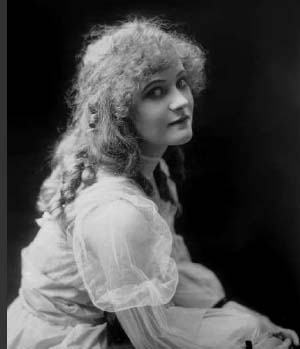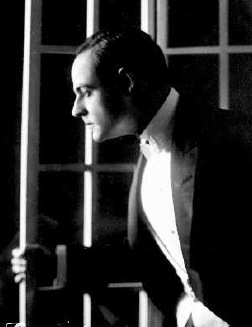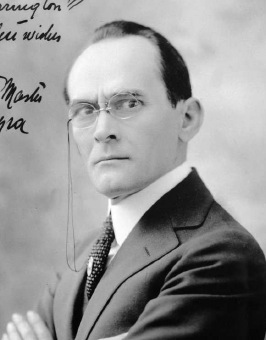
Jean Sothern
(Myra Maynard)
Born in 1895, Jean performed on stage and acted in 11 films between 1915 and 1918, gaining notoriety in an early production of The Two Orphans (later remade as Orphans of the Storm) with Theda Bara.
According to the local Ithaca newspapers:
She was selected personally for the part of Myra by authors Hereward Carrington and Charles Goddard. Carrington, who felt Miss Sothern had “extraordinary mental powers,” conducted a number of psychological tests on auditioners for the role, feeling that the leading lady “must be capable of portraying the emotions of one subject to the compelling influences of a superior will. She must have grace, poise and a personality which will actually reach out from the screen, take possession of the people and make them instinctively, irresistibly respond to each impulse and thrill with every emotion which the star experiences.”
Interestingly, during shooting of the serial, Miss Sothern fell victim to an unusual circumstance:
“In one of the scenes of the new spirit drama, [Myra/Jean] visits the laboratory of Dr. Alden, the psychic investigator. She seated herself before a huge hypnotizing machine. The lights were dimmed in the laboratory, the switch was turned, and to the soothing purr of an electric motor the huge wheel, with its myriad mirrors glancing, refracting and blending with the lights, began to revolve at high speed. After a proper length of time, Dr. Alden (Howard Estabrook) was directed to bring Miss Sothern back to Earth again. To the great amazement of all, Miss Sothern failed to carry out her part. Again and again [Director] Leo Wharton called his direction to her which she seemingly failed to hear. Finally, Estabrook shook her violently. She opened her eyes slowly, and after a moment proceeded with the scene. She had actually been hypnotized.”
The Mysteries of Myra brought Jean a great deal of attention and further leading roles in features such as Her Good Name, A Mother’s Ordeal, Miss Deception and Peg O’ the Sea.

Howard Estabrook
Dr. Payson Alden
Detroit-born Howard Estabrook entered show business as a stage actor in New York in 1904 at the age of twenty. He married Gretchen Dale and appeared in several films starting in 1914, including The Four Feathers and the movie serial spoof Officer 666.
He was formally introduced to Ithaca, New York immediately after a capacity showing of The Four Feathers at a local theater, after which he gave a “clever talk about Motion Picture Chop Suey.” He then found himself to be popular with the boys at Cornell University, some of whom regularly participated in Wharton films, and assisted them with benefit performances for their athletic and actors’ funds. Estabrook also attended varsity sports events while in town for the production. After performing in The Mysteries of Myra in 1916 (his final appearance as an actor), he left films to work as an Executive Assistant in the Vacuum Oil Company in New York, but then returned in 1921 to producing and directing for various movie studios.
He eventually settled on screenwriting as his creative focus, and authored the well-regarded Hell's Angels (1930), the Academy Award-winning Cimarron (1931) and the 1935 version of David Copperfield. He was also responsible for the screenplays of The Corsican Brothers, The Bridge of San Luis Rey, and The Virginian.
Howard died on 16 July 1978 in North Hollywood, California after a long career in motion pictures.

Michael Rale
Grand Master of the Black Order
Mike Rale, born in Russia in 1877, gave up dreams of becoming a barrister and came to America at the age of twenty to seek roles on the stage. He sang ballads with a minstrel troupe for five years then moved into Vaudeville and musical theatre, gaining acclaim for his portrayal of a Frenchman in The Yankee Consul. He played both a Hebrew and an Italian musician in The Gentleman from Missisippi and established a reputation as an actor who could play a role of any nationality.
Mike played a number of Japanese characters, usually villains, in several early silent films beginning in 1914 with the Pearl White Elaine serials (below left) and a version of Madame Butterfly. He also played a vengeful Indian Prince in Episode 4 of Beatrice Fairfax, "The Stone God," which has survived and is viewable today on the DVD of the series restored by the Serial Squadron. That episode includes a double-exposure special effect, similar to those used in The Mysteries of Myra, to bring an Idol of Buddha to life.
He again was cast as an Oriental (called Kato) in the Whartons' Patria, this time in the service of primary villain Warner Oland.
He died in Englewood, New Jersey in 1940.